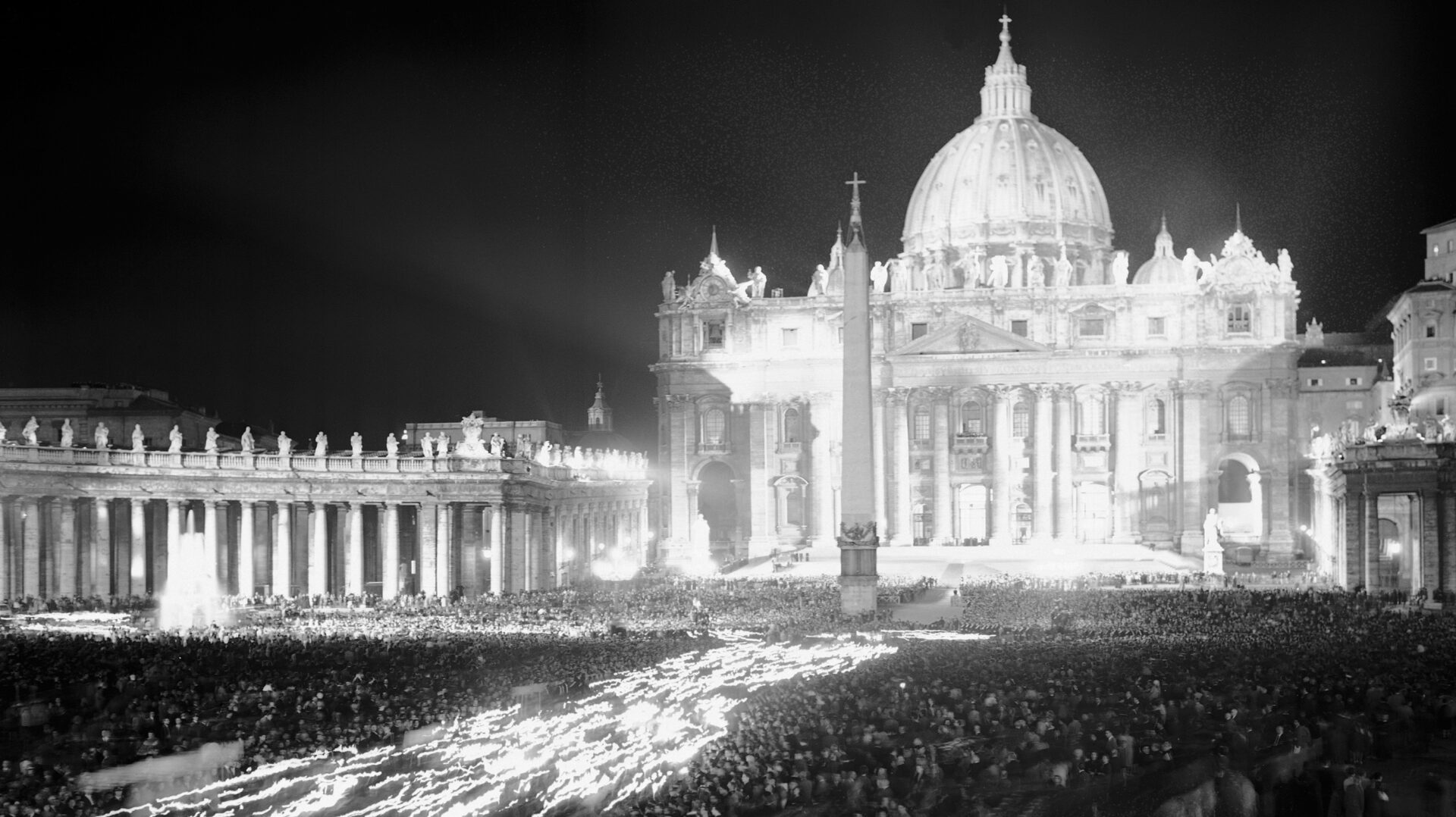In the eye of the hurricane, one force for continuity seemed clear. The pope, based in the Vatican City, in the heart of Rome, began to assert bold new initiatives in the political sphere, while holding to traditional positions on doctrinal church affairs.
The feeling that Pope Pius XII (r. 1939-1958) had not done enough forestall World War II or to assist beleaguered Jews within the Nazi controlled nations persisted, and after the war he and his successors sought to take clear positions on world affairs.
These positions were defined in the context of substantial changes within the church itself. The most extensive changes were initiated by Pope John XXIII (r. 1958– 1963), who in 1959 called the twenty-first Ecumenical Council of the church, in a tradition begun by Constantine the Great in the fourth century. Known as Vatican II, this council continued to meet under his successor, Pope Paul VI (r. 1963-1978). The council made many changes in the liturgy, encouraged celebration of Mass in vernacular languages, and opened up relations with many other denominations.
While the church continued to be identified in many parts of the world with the forces of conservatism— especially in its opposition to women clergy, in its emphasis on the child-bearing responsibilities of women, and in its support of Catholic dictators in South America— elsewhere the church was increasingly associated with the forces of reform.
Radical priests in Central America, innovative church leaders in North America, and activist bishops in the non-Western world were urging the church to face the statistical fact that most Catholics apparently practiced some form of birth control, argued that the church should be a force for land reforms that would benefit the peasants, and held that the nature of the church service needed to be changed even further if the younger generation were to be retained.
These trends, marked by a concern for public affairs, continued under a dynamic new pope, John Paul II, elected in 1978 as the youngest pope since 1846 and the first non-Italian pope since the sixteenth century. A Pole, Karol Wojtyla (1920– ), former archbishop of Kracow, worked to expand the role of the church in the non-Western world.
He made extensive overseas visits, including to the United States, where church doctrine was frequently questioned by younger priests, and took strong positions against military aggression, political terrorism, and abortion. Of particular concern to this pope was the government suppression of the Polish Solidarity movement in 1981-1982.
John Paul was seriously injured in an assassination attempt in Rome in 1981, but he recovered and was able to pay an official visit to his native Poland in 1983 and thereafter to many other nations, including a triumphant trip to the Philippines in 1995.

